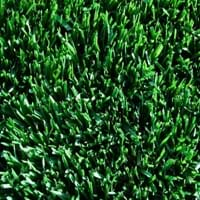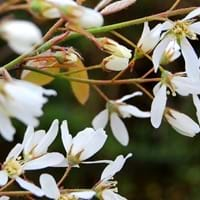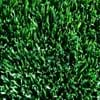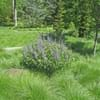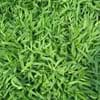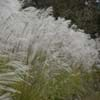Life Span
Perennial
Perennial
Origin
World/Pandemic, North America, Europe
United States, Northeastern United States, Mid-Atlantic United States, Southeastern United States, Central United States, South-Central United States
Types
Alene, Barblue, Caliber, Canterbury
shadbush, wild plum
Number of Varieties
Not Available
Habitat
Cultivated Beds, Lawn, meadows
Swamps, Thickets, Woods
USDA Hardiness Zone
3-10
4-9
Sunset Zone
A1, A2, A3, 1a, 1b, 2a, 2b, 3a, 3b, 4, 5, 6, 7, 8, 9, 10, 11, 14, 15, 16, 17, 18, 19, 20, 21, 22, 23, 24
2a, 2b, 3a, 3b, 4, 5, 6
Habit
Mat-forming
Oval or Rounded
Minimum Width
Not Available
Flower Color
Purplish Green
White
Flower Color Modifier
Bicolor
Bicolor
Fruit Color
Not Available
Red, Violet, Plum
Leaf Color in Spring
Green, Blue Green, Gray Green
Green, Gray Green
Leaf Color in Summer
Light Green
Green
Leaf Color in Fall
Green, Blue Green, Gray Green
Yellow, Red, Orange, Orange Red
Leaf Color in Winter
Green, Blue Green
Not Available
Leaf Shape
Narrowly linear
Oval
Plant Season
Spring, Summer, Fall
Spring, Summer, Fall
Sunlight
Full Sun, Partial Sun, Partial shade
Full Sun, Partial Sun
Type of Soil
Clay, Loam
Clay, Loam, Sand
The pH of Soil
Acidic, Neutral
Acidic, Neutral, Alkaline
Soil Drainage
Well drained
Average
Tolerances
Not Available
Not Available
Where to Plant?
Ground
Ground
How to Plant?
Seedlings, Sod
Grafting, Seedlings, Stem Planting
Plant Maintenance
Medium
Medium
Watering Requirements
Water frequently while growing
occasional watering once established
In Summer
Lots of watering
Drought Tolerant
In Spring
Moderate
Moderate
In Winter
Average Water
Less Watering
Soil pH
Acidic, Neutral
Acidic, Neutral, Alkaline
Soil Type
Clay, Loam
Clay, Loam, Sand
Soil Drainage Capacity
Well drained
Average
Sun Exposure
Full Sun, Partial Sun, Partial shade
Full Sun, Partial Sun
Pruning
Remove damaged leaves, Remove dead branches, Remove dead leaves
No need to prune, Prune if you want to improve plant shape
Fertilizers
Nitrogen
All-Purpose Liquid Fertilizer, Less fertilizing
Pests and Diseases
Dollar spot, Rust, Summer Patch
Bacterial leaf spot, Beetles, Powdery mildew, Red blotch, Rust
Plant Tolerance
Drought
Drought, Heat And Humidity
Flowers
Insignificant
Showy
Flower Petal Number
Single
Single
Foliage Texture
Fine
Medium
Foliage Sheen
Matte
Matte
Attracts
Insects
Birds, Deers, Hoverflies
Allergy
Cough, Itchy eyes, Runny nose
no allergic reactions
Aesthetic Uses
Ground Cover
Not Used For Aesthetic Purpose
Beauty Benefits
Not Available
Improve skin condition, Not Available, Skin Problems
Environmental Uses
Erosion control
Agroforestry, Food for animals, Food for birds, No fertilizer, pesticides, or herbicides needed, soil stabilisation
Medicinal Uses
Not Available
Diarrhea, Gastrointestinal disorders, Menstrual Disorders
Part of Plant Used
Leaves
Fruits
Other Uses
Used in lawns and turf
Food for animals, Used As Food
Used As Indoor Plant
No
No
Used As Outdoor Plant
Yes
Yes
Garden Design
Lawns and Turf
Edible, Feature Plant, Foundation, Fruit / Fruit Tree, Mixed Border, Screening / Wind Break, Shade Trees
Botanical Name
POA pratensis
AMELANCHIER arborea
Common Name
Kentucky Bluegrass
Common Serviceberry, Downy Serviceberry, Juneberry, Shadbush
In Hindi
Kentucky Bluegrass
Juneberry
In German
Kentucky Bluegrass
Felsenbirnen
In French
Kentucky Bluegrass
Amélanchier
In Spanish
Pasto azul de Kentucky
Amelanchier
In Greek
Κεντάκυ Bluegrass
Juneberry
In Portuguese
Kentucky Bluegrass
Amelanchier
In Polish
Wiechlina
Świdośliwa
In Latin
Kentucky Bluegrass
Amelanchier
Phylum
Magnoliophyta
Magnoliophyta
Class
Liliopsida
Magnoliopsida
Clade
Angiosperms, Commelinids, Monocots
Dicotyledonous
Tribe
Poeae
Not Available
Subfamily
Pooideae
Malvoideae
Season and Care of Kentucky Bluegrass and Juneberry
Season and care of Kentucky Bluegrass and Juneberry is important to know. While considering everything about Kentucky Bluegrass and Juneberry Care, growing season is an essential factor. Kentucky Bluegrass season is Spring, Summer and Fall and Juneberry season is Spring, Summer and Fall. The type of soil for Kentucky Bluegrass is Clay, Loam and for Juneberry is Clay, Loam, Sand while the PH of soil for Kentucky Bluegrass is Acidic, Neutral and for Juneberry is Acidic, Neutral, Alkaline.
Kentucky Bluegrass and Juneberry Physical Information
Kentucky Bluegrass and Juneberry physical information is very important for comparison. Kentucky Bluegrass height is 30.00 cm and width Not Available whereas Juneberry height is 610.00 cm and width 300.00 cm. The color specification of Kentucky Bluegrass and Juneberry are as follows:
Kentucky Bluegrass flower color: Purplish Green
Kentucky Bluegrass leaf color: Green, Blue Green and Gray Green
Juneberry flower color: White
- Juneberry leaf color: Green and Gray Green
Care of Kentucky Bluegrass and Juneberry
Care of Kentucky Bluegrass and Juneberry include pruning, fertilizers, watering etc. Kentucky Bluegrass pruning is done Remove damaged leaves, Remove dead branches and Remove dead leaves and Juneberry pruning is done No need to prune and Prune if you want to improve plant shape. In summer Kentucky Bluegrass needs Lots of watering and in winter, it needs Average Water. Whereas, in summer Juneberry needs Drought Tolerant and in winter, it needs Less Watering.
